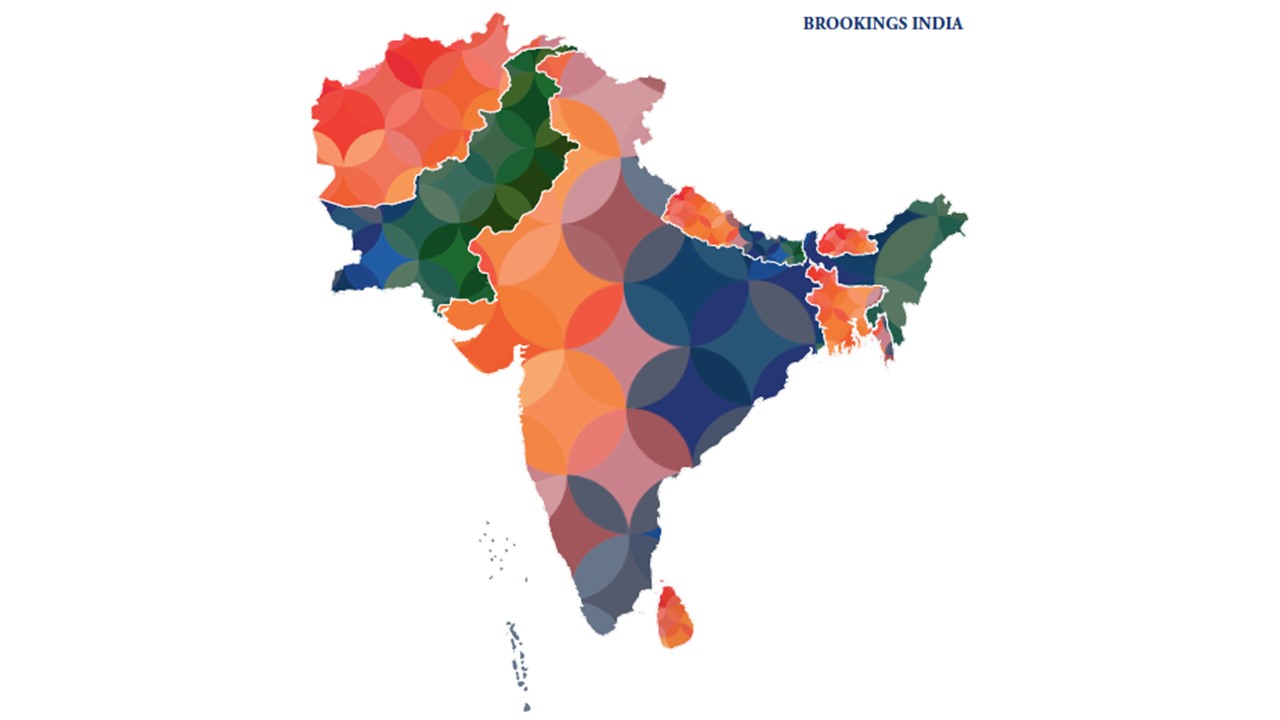Content from the Brookings Institution India Center is now archived. After seven years of an impactful partnership, as of September 11, 2020, Brookings India is now the Centre for Social and Economic Progress, an independent public policy institution based in India.
The law of gravity has an important application in the economics of international trade: gravity models of trade postulate that the volume of trade between any two nations (or more broadly, regions) is directly proportionate to their combined size and inversely proportionate to the distance between them. While lacking a formal theoretical foundation, this approach has been relatively accurate in its predictions. Of course, analysis of trading patterns becomes much more complex when factors such as natural resources, technology, investment and, importantly, protectionist policies are taken into account. Nevertheless, gravity is a useful approach when thinking about trade patterns and opportunities in the South Asian region.
However, the geographical characteristics of the region also have a strong bearing on trade and the potential for its expansion. India’s economic and geographic size clearly makes it a kind of trade pivot for the region; it is by far the largest economy and has the largest number of common borders (land and sea) with other member countries. In fact, this pattern has implications for somewhat unorthodox approaches to structuring cross-border economic relationships.
It is difficult to think of trade between, say, Bangladesh and India or Sri Lanka and India at a macroeconomic level. Exports from Bangladesh may be very competitive in the states bordering it, but much less so, given transportation costs, in distant states. Similarly, Sri Lankan exports may do well in the southern Indian states, but find little traction in the west, north or east. Likewise, Indian exports to these two countries are most likely to come from the states closest to them. Even though India has free trade agreements with both countries, the real trade opportunities are going to be found largely in the neighboring states.
From the perspective of gravity, therefore, it is not so much the region as a whole that matters, but the opportunities for trade that proximity creates. In effect, the Indian economy can be visualized as a collection of relatively separate “sub-regions”, each bordering one or more of the SAARC countries. Each sub-region can then become the focus of a somewhat decentralized trade policy, of course working within the confines of a national policy framework.
One consideration in this line of reasoning is the similarity of resource endowments between each sub-region and its neighboring SAARC country. Conventional trade theory predicts that trade volumes are positively correlated with the degree of difference in resource endowments between trading partners. Two labor-abundant economies tend to trade less with each other, because they are likely to be competitive in largely the same set of products. Experience suggests that this is a rather incomplete explanation of trading patterns; for example, Europe and the USA, both relatively similarly endowed, are extremely large trading patterns. One reason for this is that, within industries, different countries tend to specialize in some components of the supply chain, so that they can then trade with each other, achieving overall cost efficiency in the process.
Against this backdrop and line of reasoning SAARC trading arrangements can be thought of not just in terms of agreements between nations, but more pragmatically, mechanisms that facilitate trade between neighboring sub-regions, be they a single state, a group of states or a whole country. National trade policy obviously provides an overall set of rules that govern trade, but given SAARC’s geography, sub-regional governments as well as private sector stakeholders, such as industry and trade associations, will also have an important role to play in the exploitation of trade opportunities.
Such sub-regional arrangements may, of course, pose challenges to both foreign policy and trade policy, but they are not unprecedented. An interesting regional precedent is the Batam free trade zone, which brings Singapore and a part of Indonesia, which is proximate to it, into a traditional free trade zone arrangement. From the SAARC perspective, even if resource endowments in sub-regions are similar, specialization and scale economies could contribute to greater efficiency, which in turn, could improve competitiveness of products from the region in both the region and in international markets.
This is an endeavor that requires detailed assessments of each potential sub-region. Thus, it is recommended that SAARC take forward the process of identification of potential sub-regions and carry out appropriate assessments of resources, current and potential economic activities and the intra-sub-region and larger trading opportunities that might arise. Direct involvement of regional governments, local authorities and local business interests will be necessary. Concrete institutional arrangements, such as Batam-type free trade zones may follow.
Essentially, trade between SAARC countries will grow if a combination of gravitational forces and sub-regional proximities form the basis of the overall regional trade policy.
_______________________________________________________________________________
This chapter is a part of Brookings India’s briefing book, “Reinvigorating SAARC: India’s Opportunities and Challenges.” To view the preface and table of contents, click here.
***
W.P.S. Sidhu is senior fellow for foreign policy at Brookings India in New Delhi and the Brookings Institution. Sidhu’s research focuses on India’s role in the emerging global order; the role of the United Nations and regionalism; and confidence-building measures, disarmament, arms control, and non-proliferation issues.
Rohan Sandhu is research assistant at Brookings India, where he conducts research in the areas of international development and political economy – including education, democracy, poverty, and Indian foreign policy.
_______________________________________________________________________________



